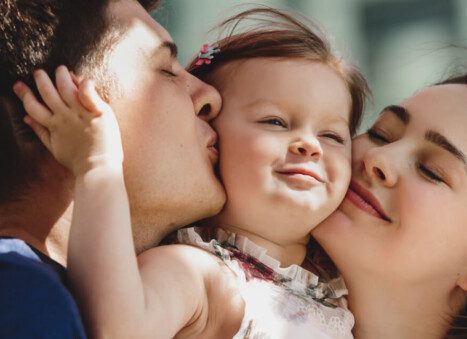
Understanding Dismissive Avoidant Attachment: Signs, Causes, And Impact
For years, I was confused as to why my father was always so distant, always so emotionally unavailable to me. Years later, I realized he had a dismissive avoidant attachment to me.
Just saying that dismissive avoidant attachment is a term that applies to any individual who tries to avoid or avoids emotional closeness, connection, and attachment to others.
Any individual suffering from dismissive avoidant attachment generally does not pursue any type of romantic relationship and might even actively avoid the same. But my dad did change for the better – it took him years to open up to me emotionally, but eventually, he did.
Plus, I also realized that I suffered from an anxious style of attachment, which is completely opposite to the dismissive avoidant attachment style. Today, I am going to dissect this style of attachment and dive into the depths of this style.
Stay tuned to find out more.
The Attachment Theory:

Attachment styles are primarily based on the attachment theory – it is an idea that dissects the various ways in which individuals connect to others. First invented by John Bowlby, a British psychologist, the Attachment theory can be broken down into distinctive attachment types.
Bowlby believed that how individuals connect to others is related to their formative childhood years. The three types of attachment types are as follows,
1. Secure:
This is a style of attachment that is generally considered to be functional for a majority of adult relationships. Individuals who are attached securely to others are usually able to make close bonds and, in return, give way to trust.
These individuals usually seek support from other individuals to share their thoughts and feelings with them.
2. Anxious:
Individuals with an anxious style of attachment are likely to experience anxiety about most of their relationships with other individuals. Individuals with an anxious style of attachment typically invest a lot in their relationships. Sometimes, it can lead to an unhealthy codependency.
The anxiety experienced by these people tends to worsen in different stressful situations.
3. Avoidant:
Individuals with an avoidant dismissive attachment style usually try not to get very close to others. These individuals tend to avoid emotional connection and intimacy and might even have issues viewing themselves in a positive way or even seeing other individuals that way.
Dismissive avoidant attachment is one attachment model in which case an individual tries not to depend on other individuals or even have other individuals depend on them.
Characteristics Of Dismissive Avoidant Attachment:

So, you know what dismissive avoidant attachment style is – individuals who are dismissive avoidant are usually incredibly self-sufficient, according to Silvi Saxena (MBA, MSW, LSW, CCTP, OSW-C).
She further added how dismissive-avoidant behaviors might include
“independence to an extreme, not asking for help, setting a lot of boundaries, withdrawing from their partner when getting too close.” (source)
The primary signs of this attachment style are as follows,
1. Highly Secretive:
Dismissive avoidant individuals are often rigid and secretive. These individuals do not allow anyone to influence their personal plans.
2. Dismissive:
When anyone attempts to be close to an individual with this attachment style, they might take a step back entirely from the friendship or even the relationship. They might suddenly seem closed off, distant, and cold.
3. Casual, Brief Relationships:
In the case of relationships, individuals with this attachment style are, in most cases, relatively more prone to shallow and short romantic partnerships. In these relationships, the connection is very casual and is over quickly in most cases.
The Causes Of Dismissive Avoidant Attachment:

So, we just checked out the major dismissive-avoidant traits and the associated red flags. But what about the causes behind the same?
Since the whole attachment theory is related to how individuals talk and engage with guardians and parents in their formative years, it actually makes a whole lot of sense that the causes behind a dismissive avoidant attachment style can actually be traced back to a very young age.
The most important factors that play a major role behind causing the dismissive avoidant style of attachment include,
1. Dismissive parenting:
It can be believed that the dismissive avoidant style of attachment takes place because small children or babies do not get enough attention or even care they really need from their caregivers or parents.
2. Poor responsiveness:
If caregivers or parents are dismissive, then their children will find it difficult to express or communicate their needs and emotions. This is because doing so does not guarantee proper care.
3. Unmet needs:
When the needs of children are not met properly by their parents or caregivers, they end up developing a vibe that others cannot care properly for them. While attachment styles of adults are different from those of children, proper research shows that it kinda stays similar in a majority of individuals.
Impact Of Dismissive Avoidant Attachment Style:

If you are a dismissive, avoidant woman or man, or you are dealing with a similar individual, then you need to understand the impact of this attachment style.
Being an independent individual and training your kids to live on their own is vital for survival. But at the same time, this attachment style isn’t ideal for everyone. Plus, this attachment style can also affect all involved parties.
If you or even someone you are close to has an attachment style that’s avoidant dismissive, then the needs of individuals might be unmet.
1. If you are dismissive and avoidant by nature, then you will fail to meet your own needs.
2. Your loved ones might start feeling neglected because of your style of attachment.
3. You might not be able to handle conflict.
And It’s A Wrap!
For the longest time, I kept looking for things like ‘dismissive-avoidant woman traits’ on Google to find out my style of attachment. Because I was confused about inheriting my attachment style from my dad. But later, I discovered that my style of attachment was anxiety-ridden.
So, naturally, it doesn’t mean you will inherit the same attachment style from your parents. It is possible that your attachment style could be exactly the opposite. Identifying these traits and becoming aware of your attachment style is the first healthy step you can take – reaching out to a support group, a therapist, or even confiding in your close ones are all healthy steps you can take towards improvement.
Have A Look:
Already have an account?
Sign In
Create your account
User added successfully. Log in








